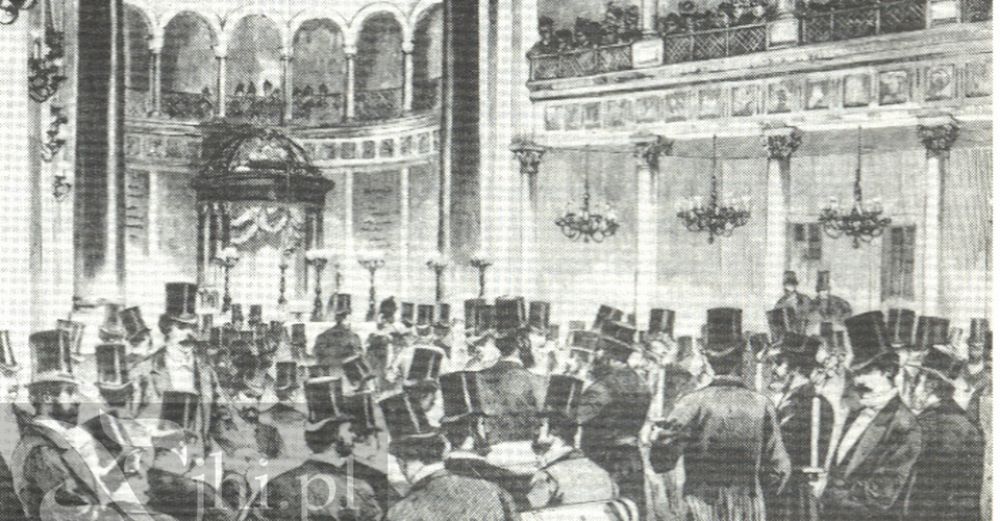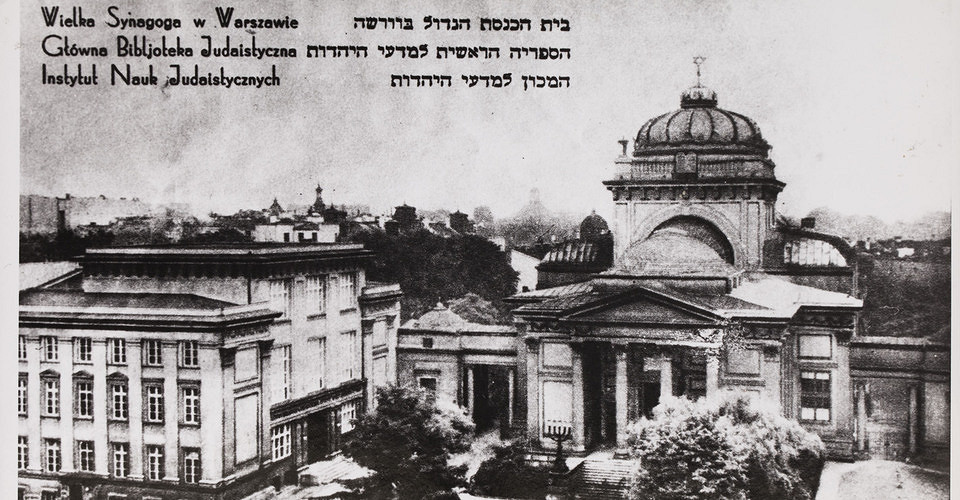- News
- Events
- Oneg Shabbat
- Collections
- Research
- Exhibitions
- Education
- Publishing Department
- Genealogy
- About the Institute
- Bookstore


Ceremony of the opening of the Great Synagogue in Tłomackie
The Great Synagogue was opened on 26th September, 1878. Among the many who attended the evening ceremony was Russian General-Governor Count Pawel Kotzebue and President of the City Socrates Starynkiewicz. The gathered were welcomed by the new synagogue preacher, Isaac Cylkow. He spoke in Polish, which — as none of the authorities reacted — was considered to be an informal permission to preach in that language.
— We repose our hope in God, said Cylkow — That never again will we be considered to be a separate community nor as a separate people treated, but as eligible children of our country, the citizens of one country [...] that the light will expand and finally disperse the heavy fog of preconceptions and prejudices, which for such a long time have lingered on our mutual relations [...] We will get to the desired haven of humanity, where the peak of civilization will be the words: Love your neighbour as yourself, love the stranger, no matter in which temple he worships God, to which tribe he belongs.

Cylkow and next rabbis of the Great Synagogue consistently strived to achieve the ideals set out on the day it was opened. On the anniversaries of Poland’s resumption of independent statehood and the adoption of the Constitution of May 3 in the synagogue in Tłomackie there were organized solemn prayers, and after the death of Józef Piłsudski a funeral service was held there. Frequent visitors to the Great Synagogue were Christians, who used to come in crowds to the synagogue for choir performances, which did not only perform religious songs, but also pieces by Handel, Bach or Vivaldi.
What attracted to the new synagogue Christians and followers of moderate Reform Judaism, usually coming from the wealthiest and most assimilated Jewish communities, repelled from it other Jews. Hasidic and strictly orthodox Jews were struck by the fact that the language of the sermons had been changed from Hebrew to Polish. They did not like the idea of prayers being accompanied by choral and organ music. Controversial was the inscription painted on the arch of the vault in which the full name of God appeared twice. Although the synagogue in Tłomackie was the largest one in the city, it served only a very small part of the Warsaw Jews.
It could sit 2,000 people, was home to the outstanding choir, world famous cantors were singing there. Their performances were attended by those religious as well as laymen, Jews and Poles (f.e. Ignacy Paderewski, prime minister Felicjan Sławoj-Składkowski, Emil Młynarski, etc.).
In 1936 a new building was erect in the closest proximity to the Great Synagogue with the intention to become home to the Main Judaic Library. Its style matched the style of the Great Synagogue. It was positioned sidewise towards the square, closing the synagogue’s yard. It was home to the collection of approx. 30,000 volumes.
Beginning from 1940 both buildings were within the ghetto borders. In the Library offices of Jewish Self-Help were located, as well as were held some concerts (including symphonic concerts) and other cultural events. In disguise of Self-Help operations the underground organization “Oneg Shabbat” was working, documenting the Holocaust of Polish Jews. It is its members who we owe the most comprehensive source on the Warsaw ghetto: Ringelblum Archive.
On the 16th of May 1943, in an act of symbolic end of the Warsaw Ghetto Uprising, SS-general Jurgen Stroop planned spectacular blowing-up of the grand temple. He described this barbaric act in details and with pride to Kazimierz Moczarski, which the latter included in his book „Conversations with an Executioner”.